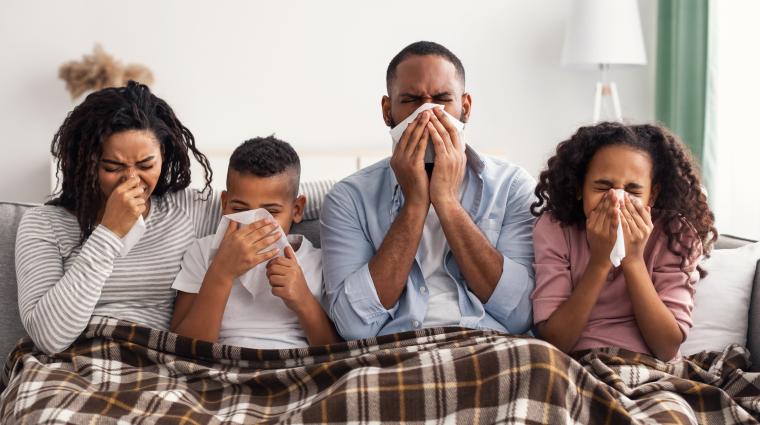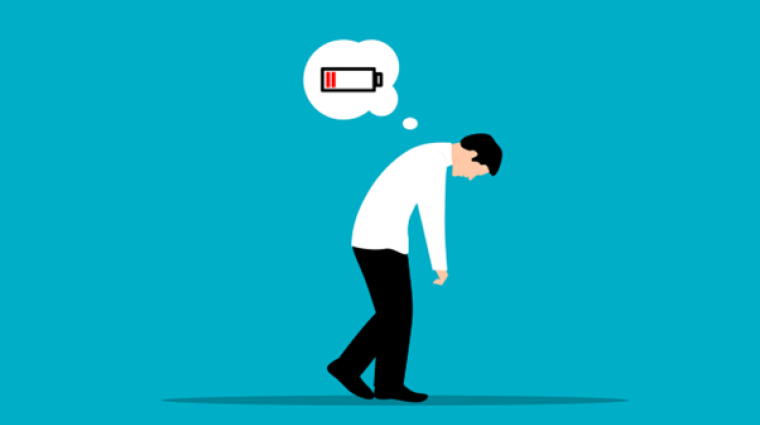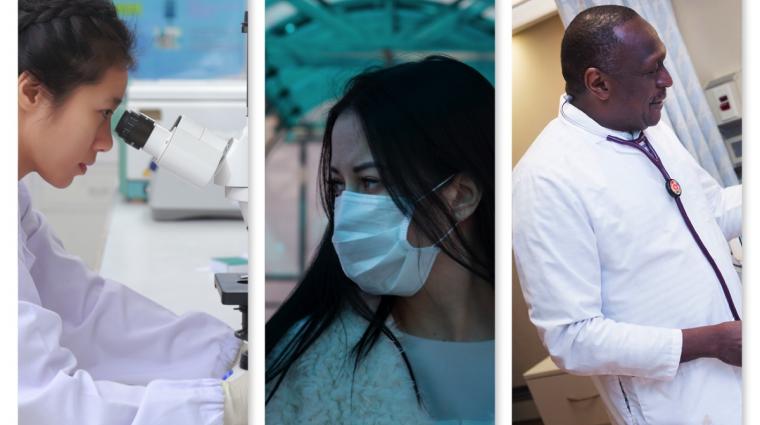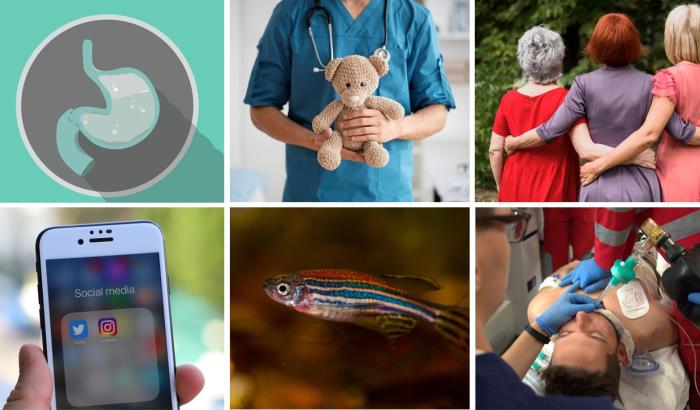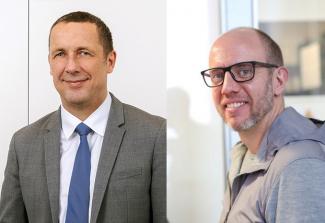
LIH, ScienceRelations
Ulf Nehrbass (left) is CEO of the LIH and spokesman for the COVID-19 Task Force. Paul Wilmes (right) is a professor at the LCSB and deputy spokesman for the COVID-19 Task Force.
The COVID-19 Task Force is a consortium of researchers in Luxembourg, which has been cooperating closely with the health authorities and hospitals for weeks now on projects, projections and strategies. It supplies factual information on the spread of the virus and monitors the situation with the aim of continuously containing the spread of the novel coronavirus.
The COVID-19 Task Force has now developed a large-scale testing strategy, which was presented at a press conference two days ago. This strategy aims to ensure a safer and faster easing of the lockdown and is unique worldwide as it will involve testing the entire population. The primary objective is to prevent new chains of infection so that the most important aspects of daily life can be guaranteed without endangering the health of individuals or overburdening the healthcare system. We spoke with the spokesman and deputy spokesman of the COVID-19 Task Force, Ulf Nehrbass (Luxembourg Institute of Health) and Paul Wilmes (University of Luxembourg).
What does the testing strategy involve?
The testing strategy is based on four key points:
- segmentation of the population into contingents;
- a large-scale testing strategy that aims to test one contingent at a time and ultimately the entire population (including cross-border workers) several times, with efficient subsequent isolation and quarantine measures;
- given the low remaining prevalence (i.e. few carriers) of the virus, prevent reinfection through effective contact tracing;
- a relatively fast and safe resumption of activities, taking general hygiene measures into account.
This strategy is in line with the gradual easing of the lockdown envisaged by the government. The aim is to supply factual information on the spread of the virus and to monitor the situation so as to retain control of its development at all times. It will allow the political decision-makers to:
- receive continuous updates on the spread of the virus in Luxembourg, which will in turn enable them to adjust their decisions to the situation as it develops;
- ease restrictions faster for selected social groups (over an around three-month period) on the one hand and minimise the risks involved in easing the lockdown restrictions on the other hand through the large-scale testing strategy for individual contingents.
lf Nehrbass, you have led the development of a concept on how researchers in Luxembourg can accompany Luxembourg’s exit strategy. What were the main elements to take into account during development of this strategy?
Ulf Nehrbass: We are currently dealing with a virus whose impact has been so immense, it has essentially turned people’s lives upside down the world over. Governments worldwide initially reacted with at times drastic measures. This reaction was both justified and important. We would have completely lost control otherwise and the consequences would have been catastrophic. Of course, we also want to get out of this situation again. It is important to remember here that it will take some time yet for our lives to return to the way they were a few months ago. So we must learn to live with the virus as best possible. And this can best be achieved if we have the virus under control and take the latest knowledge on the virus into account in our decision-making. Hence the strategy must involve developing innovative solutions on how we can resume social life again despite the virus, while still keeping it under control at all times.
We are facing a dilemma though: in the current state of lockdown, we have effective control over the virus. From a purely epidemiological perspective, it would be sensible to remain in this state. However for many other reasons – economic, psychological or social ones, for example, or given the collateral damage that this situation is causing – it is important to exit the lockdown as quickly as possible. There are also many researchers in Luxembourg examining the psychological and economic consequences of the pandemic. Exiting the lockdown will always involve a certain amount of risk though. On the personal level as the risk of infection increases for individuals and on the social level because the risk of a second wave of infection increases and this could in turn lead to a new lockdown in a worst-case scenario. The strategy must therefore also aim to minimise these risks and attempt to ensure that Luxembourg can ease the lockdown as soon as possible while at the same time minimising the risk for individuals and society as a whole.
The strategy developed by the researchers in Luxembourg is known as the large-scale testing strategy. Testing is therefore a core element of the strategy. Why take this particular approach?
Ulf Nehrbass: Luxembourg has a similar economic structure to its neighbouring countries. On one point we differ substantially though: the size of the population. This allows us to do something that is not possible in countries with a larger population, namely to adopt a strategy that aims to gradually test the entire population, in contingents. This is an important opportunity and one that we must seize.
Why does large-scale testing ensure greater safety for Luxembourg’s citizens?
Paul Wilmes: According to the latest estimates, it can be assumed that around 80% of COVID-19 cases are asymptomatic. This means that a great many people are infected without even realising it. The problem is, though, that they can still infect others.
Compared to other countries, Luxembourg has already tested a lot of people; indeed, we are among the leaders in terms of the number of tests completed. And yet, to date we have “only” tested people who presented symptoms – hence it can be assumed that, so far, we have only identified 20% of those who are actually infected. If we now systematically give everyone the opportunity to be tested on a voluntary basis, we will also be able to find and isolate more infected people before they infect others. It is important to use contact tracing to quickly and efficiently identify the contacts of those who have tested positive and to quarantine and test them, too. This is the only way to effectively break chains of infection.
So we will isolate individuals again while gradually allowing society as a whole to come out of isolation?
Paul Wilmes: Exactly. This was also the approach at the start of the epidemic. There’s no denying that the isolation measures are unpleasant for individuals. But they are important for society as a whole and ultimately everyone benefits from them. After all, the objective is for us as a society to regain greater freedom of movement as quickly and safely as possible.
Would it be right to say that getting tested essentially protects others?
Ulf Nehrbass: Yes, that’s right. Even if I do not have any symptoms, I can still carry the virus in me and be contagious. If I am unaware that I am infected and my physical contact with others increases again, the chances are relatively high that I will infect others – especially if the lockdown is gradually eased. But if I know thanks to the test that I am positive, I go into isolation and protect my fellow humans! “Stay home – it could save lives” has become “Get tested – it could save lives!” It is of course also in everyone’s best interest, too.
What kind of tests will be used? qPCR or antibody tests?
Paul Wilmes: In the preliminary phase, quantitative PCR (qPCR) tests will be used. These indicate whether a person is currently infected or not. Comprehensive antibody testing makes little sense right now, as we expect that only a relatively small proportion of the population will have developed antibodies. The “CON-VINCE” study will provide further insights in this respect. Antibody testing will play more of a role once a certain proportion of the population has developed immunity.
We have often read in readers’ comments that people are wondering why only those with symptoms were tested at the start and now suddenly everyone. What do you have to say about this?
Paul Wilmes: At the start of the pandemic, Luxembourg had to set priorities, as there simply were not enough tests available to purchase for everyone at that time. Hence the focus was on cases presenting symptoms. It also only gradually became clear to us how many cases are asymptomatic and that these asymptomatic cases play a decisive role in the spread of the virus. The efficiency of the tests is also continuously improving. And the logistics of testing the entire population first had to be organised. Which is why we are only now in a position to implement this test strategy.
The question has also been raised of what happens if you don’t get tested. The press release stated that those who test positive will be isolated and the lockdown eased for those who test negative. What happens to those who do not want to be tested – it is voluntary after all.
Ulf Nehrbass: The restrictions will be eased for all people in a contingent, whether they have been tested or not. But not for those who test positive – they must remain in isolation for two weeks. We hope nonetheless that as many people will get tested as possible. This is important to maintain control of the virus and avoid a second wave of infection. It is a great opportunity that we have here in Luxembourg; I just hope the population shares this opinion.
Another important element of the testing strategy is segmentation of the population into contingents. How does this help to increase the safety of the process?
Ulf Nehrbass: I must expand on this briefly. Normally, from an epidemiological perspective, it would be advisable to not ease the lockdown until we have returned to a situation in which there are so few infected people that we can identify and isolate each individual case – and also track down and isolate the contacts of each person who has tested positive (see the information box for details of the different phases in combatting the virus). However, the number of cases is currently still too high to be able to do this for the entire population. Or put simply: we cannot lift the restrictions for the entire population today and at the same time identify and isolate each individual and also trace back their contacts, etc. It would take a few more weeks or even months for us to reach this stage. But we don’t want to wait that long. And we don’t need to wait either as we are able to do this gradually for smaller groups – contingents of around 50,000 to 100,000 people. That’s why we will test one contingent at a time. We will check how many people within a contingent are infected, isolate them, and trace and also quarantine their contacts. By isolating people who test positive and their contacts, we create a contingent that is essentially virus-free. Or where contact tracing within the contingent will allow the authorities to identify and quarantine individuals. This corresponds to Phase 1 of combatting the pandemic, as desired. We are basically bringing forward this phase, which would – as previously mentioned – according to our calculations normally only occur in around mid-June/mid-July and can therefore begin easing the lockdown sooner. Realistically, we should be able to test a new contingent on average around every three weeks and lift the lockdown restrictions for them accordingly. It will take around three months to test all of the contingents.
Crucial here is that testing will allow us to control the remaining low number of infections through contact tracing. Without the tests, this would not be possible for months.
Does this mean that everyone could be back at work by September?
Ulf Nehrbass: If everything goes to plan, yes. We must continuously monitor the figures though and adjust decisions to the situation. We will also take representative samples within the contingents over time to guarantee consistent monitoring.
The Ministry of Health announced that contact tracing similar to at the start of the pandemic is already possible again now though and is being implemented. Doesn’t that mean that we’re already back in Phase 1?
Ulf Nehrbass: Most of us are still in lockdown at the moment. Which is why we have the virus under control. With “Phase 1”, we mean a situation in which there is no lockdown but the situation is still under control. We’re not there yet though. Without a lockdown, the authorities’ resources for the entire population would rapidly become overburdened again. However, there is a chance that we can manage it if we segment the population into contingents, rid each of these of the virus as far as possible and then implement highly efficient contact tracing. Fast and efficient contact tracing is absolutely crucial to the entire strategy.
The different phases in combatting the epidemic
Combatting the epidemic involves two phases:
- Phase 1 (containment): The number of infected people is so low that the authorities have sufficient resources to isolate those who test positive and to trace their contacts through contact tracing and isolate them too if necessary. This was the situation in Luxembourg at the start of the pandemic.
- Phase 2 (mitigation): The number of infected people exceeds the authorities’ resources. It is no longer individuals, who must be isolated, but rather the entire population (lockdown). This is the current situation in Luxembourg (as at 30.04.2020).
From an epidemiological perspective, it is not advisable to ease the lockdown entirely until a country/region is in Phase 1 – and the virus can be kept under control by identifying and isolating individual cases and quarantining their contacts.
Okay, we’ll come back to contact tracing later on. Let us first return to the contingents; it all sounds a bit abstract. Could you perhaps explain these with an example?
Paul Wilmes: Okay, here’s a hypothetical example for you: let’s imagine that the policymakers decide that all people working in the financial sector constitute a contingent. In a first step, a representative sample would be selected from this contingent. The sample size naturally depends on the size of the contingent as well as on the age and gender structures, etc. It is essentially a statistically representative sample. These people are then contacted and tested. Policymakers subsequently base their decisions on the results of these tests. If the percentage of infected people is quite high, policymakers may decide to move back the date for lifting the lockdown, for example. Either way, the entire contingent should be tested before the lockdown is eased. Then everyone who tests positive is isolated and their contacts traced and quarantined. And everyone from this contingent who tests negative can return to work.
If the percentage of infected people within the representative sample is very low, policymakers may decide to ease the lockdown for the contingent and to only test at a later date.
In other words, the decisions are still being made by the policymakers, not by the researchers.
Ulf Nehrbass: Exactly. That’s very important. We supply the facts and figures that the policymakers then use to reach decisions. We are not the ones making the political decisions though.
Does this mean that it is not the researchers but rather the policymakers who decide who belongs to which contingent?
Ulf Nehrbass: That’s correct. We have recommended that a contingent should consist of around 50,000 to 100,000 people. And we have provided the policymakers with parameters that they should take into account in their decisions, such as the age structure and economic impact of the sector along with the working conditions – so whether a safe distance can be maintained in the workplace or whether working from home is a possibility ...
So far, contingents have been construction workers, tradespeople, and all those who returned to work on 20 April. Will teachers and students make up a second contingent?
Paul Wilmes: That’s right. A further three contingents can be added to this. Firstly, there are those for whom the lockdown never applied, such as people who work in supermarkets. This contingent must be tested retroactively. And then there are nursing staff and the risk groups defined by the Luxembourg Health Directorate (Direction de la Santé). These two groups deserve special protection and should be tested regularly.
A number of readers raised the question of what happens once the entire contingent has been tested for the first time. What if you tested negative at the time, but then become infected at work after this?
Paul Wilmes: Testing will continue after this first round of tests to further monitor the spread of the virus within a contingent. A representative sample will again be selected from the contingent for this and tested regularly. This will allow us to determine whether the virus’ spread within the contingent is under control. The tests for people with symptoms will continue in parallel.
What if the percentage of infected people increases?
Ulf Nehrbass: Then either the entire contingent will be called for retesting so that we can isolate the positive cases and their contacts. Or, in a worst-case scenario, the contingent must go back into lockdown. We should try to avoid this scenario at all costs though. So the more people there are who get tested at the start, the less likely it is that this will happen.
What risk would lifting the lockdown for the entire population at once bring with it?
Paul Wilmes: If we were to lift the lockdown for the entire population at once, the likelihood of a second wave of infection would be extremely high. Since the virus spreads exponentially if no preventive measures are in place and we still have a certain number of infections within the population, this wave could be far more severe than the first. The initial number of infected people is very important to the exponential spread of the virus. The higher the initial number of infected people, the faster the number of cases increases. During the first wave of infection, the curve started with one or just a few infected people. At the moment, even though we have already been able to reduce the number of cases, there are still several hundred active cases – so people who are currently infected with the novel coronavirus (this figure includes the known, official cases and the dark figure of asymptomatic virus carriers mentioned previously). If the curve were to begin rising again exponentially from a few hundred cases, we would very quickly find ourselves facing a situation with thousands of infected people and unfortunately also many deaths. A second general lockdown would be necessary – and this is by no means desirable. Hence the segmentation into contingents, in line with the gradual lifting of the lockdown already foreseen by the government.
Students in their final year of secondary education and many teachers will return to school next week. A great many people are concerned. What would you say to them?
Ulf Nehrbass: I understand that people are worried. Overall, an easing of the lockdown restrictions is by all means desirable, but – as already mentioned – this is again associated with a certain amount of risk. I would ask that as many teachers and students get tested as possible. This act of solidarity would reduce the risk for us all. After two weeks in isolation during which students could continue to revise, they would be ready to sit their exams. And then there would not be any surprises for an entire class – on the day before the exam, for example. But it is important to also remember that even if you test negative, you must continue to comply with the standard safety regulations. So maintain a distance of two metres, wash your hands regularly, sneeze and cough into the crook of your arm, wear a mask, etc. These are measures that will accompany us for a long time to come.
Are you saying that decisions should be adjusted continuously to the situation?
Ulf Nehrbass: Absolutely. The monitoring system that we have established is crucial to Luxembourg’s exit strategy. A whole host of scientists work closely with the health authorities on a daily basis to prepare projections and statistical data and monitor important parameters. These include information on the healthcare system such as the number of hospital beds and ventilators, available hospital staff, etc., which we receive from the health authorities or ministry. The simulations that we then prepare include projections of the current and future spread of the virus within the Luxembourg population for instance (development in the number of infected people, immunity within the population, etc.). We make this information available to decision-makers. Decisions must then be adjusted continuously to the prevailing situation. Depending how the situation evolves, the lockdown can either be eased a little faster or we might even have to backtrack – this must also always be kept in mind. We must learn to live with the virus and to continuously adjust to the situation.
Paul Wilmes: The reproduction value (Rt), which indicates the average number of people an infected person will infect during their illness, is an important indicator within an exit strategy. When combined with healthcare parameters, this value provides a useful basis for reaching decisions on easing restrictions. (For more information on the reproduction value, see the information box or this article on science.lu.)
If the reproduction value is greater than one (Rt > 1), the number of new infections within the population increases and there is a risk of an exponential rise in the number of cases. The easing of restrictions must be slowed down or postponed accordingly and restrictive measures potentially even reintroduced or, in a worst-case scenario, a new lockdown imposed (depending how much over one the Rt is or the amount of healthcare resources available).
If the reproduction value is less than one (Rt < 1), an infected person infects less than one other person on average and so the virus circulation slows down. It may be possible to ease restrictions a little faster if there is also a surplus of healthcare resources available.
Let us now return to contact tracing. Why is it that this is so important?
Paul Wilmes: At this point, it is still crucial to break the chains of infection. What makes the novel coronavirus so difficult to control is that infected people can infect others before they present any symptoms. Indeed, some infected people never develop any symptoms at all. A recent study revealed that contact tracing must therefore be very fast and very efficient. Otherwise we’ll always be one step behind the virus and there is once again the risk of an uncontrolled spread.
How can contact tracing be made fast and efficient?
Ulf Nehrbass: On the one hand, this depends on the discipline of the population, on whether they really comply with the isolation or quarantine measures. On the other hand, greater efficiency can be achieved by increasing the authorities’ resources, for example, so that they are able to perform more manual contact tracing. That being said, resources can also be increased and contact tracing accelerated by implementing additional GDPR-compliant contact tracing apps. The COVID-19 Task Force has recommended the use of contact tracing apps that comply with data protection regulations and emphasised that a European solution should be implemented – or at least one that can be used across borders in the border regions. It is up to the policymakers to decide whether an app is used or not, though – and we will naturally accept their decision. Ultimately, the technology itself is irrelevant. What is important to us is quite simply that the contact tracing is efficient and fast – because this is crucial to the strategy. As long as we manage this, then it’s all good.
The entire testing strategy will cost around €40 million. What do you say to these costs?
Paul Wilmes: In terms of the gross domestic product (GDP), the economic impact of the lockdown will result in an average monthly loss of around €3,200 per inhabitant of Luxembourg. So I think that the test costing €53.59 per person covered by the National Health Fund (CNS) is a relatively low price to pay for an early and safe easing of the lockdown.
One final question: when will the pandemic end?
Ulf Nehrbass: Unfortunately, the pandemic probably will not end until a vaccine or a highly effective drug is available on a large scale, so we estimate in around six to 18 months, or until herd immunity has been achieved. Realistic estimates will only be possible when the current immunity rate in Luxembourg is known; this is what we are currently attempting to ascertain within the “CON-VINCE” study. At present, it also remains uncertain whether effective herd immunity can even be achieved in the population, as it is possible to become reinfected with the novel coronavirus. As long as no vaccine exists and herd immunity has not been achieved, we must get used to a few safety measures (distancing of two metres, regular hand washing, wearing of a mask when the two-metre distance cannot be maintained, etc.) and possibly more extensive restrictions for many months to come.
Thank you for the interview!
Author: Jean-Paul (Jhemp) Bertemes
The large-scale testing strategy in overview:
The proactive mitigation (PM) strategy developed by the COVID-19 Task Force primarily aims to prevent new chains of infection during easing of the restrictive measures so that the most important aspects of daily life can be guaranteed without endangering the health of individuals or overburdening the healthcare system. The PM strategy is based on the following five elements:
- consistent monitoring of key parameters – to track the development of the COVID-19 pandemic in Luxembourg at all times and provide a basis for decisions on the extent of testing and the relaxation or tightening of restrictions;
- segmentation of the population into contingents;
- high testing capacity: each contingent is tested with the aim of gradually testing as much of the population as possible on a voluntary basis, then exempting those who test negative from restrictive measures;
- isolation of people who test positive;
- efficient and fast contact tracing of people who test positive and subsequent quarantine measures.
Stringent hygiene measures will apply for the entire duration of the pandemic (distancing of two metres, regular hand washing, wearing of a mask when the two-metre distance cannot be maintained, etc.).
Luxembourg’s manageable population size means the country has a unique opportunity: with the help of a sophisticated but logistically realistic test strategy, Luxembourg is able to test the entire population for a price that is low compared to the overall cost of the COVID-19 crisis. This approach is currently unique the world over. Such a PM strategy offers protection for the population, reduces the risks involved in easing the lockdown and facilitates a faster transition to a state in which society and the economy can function again.

